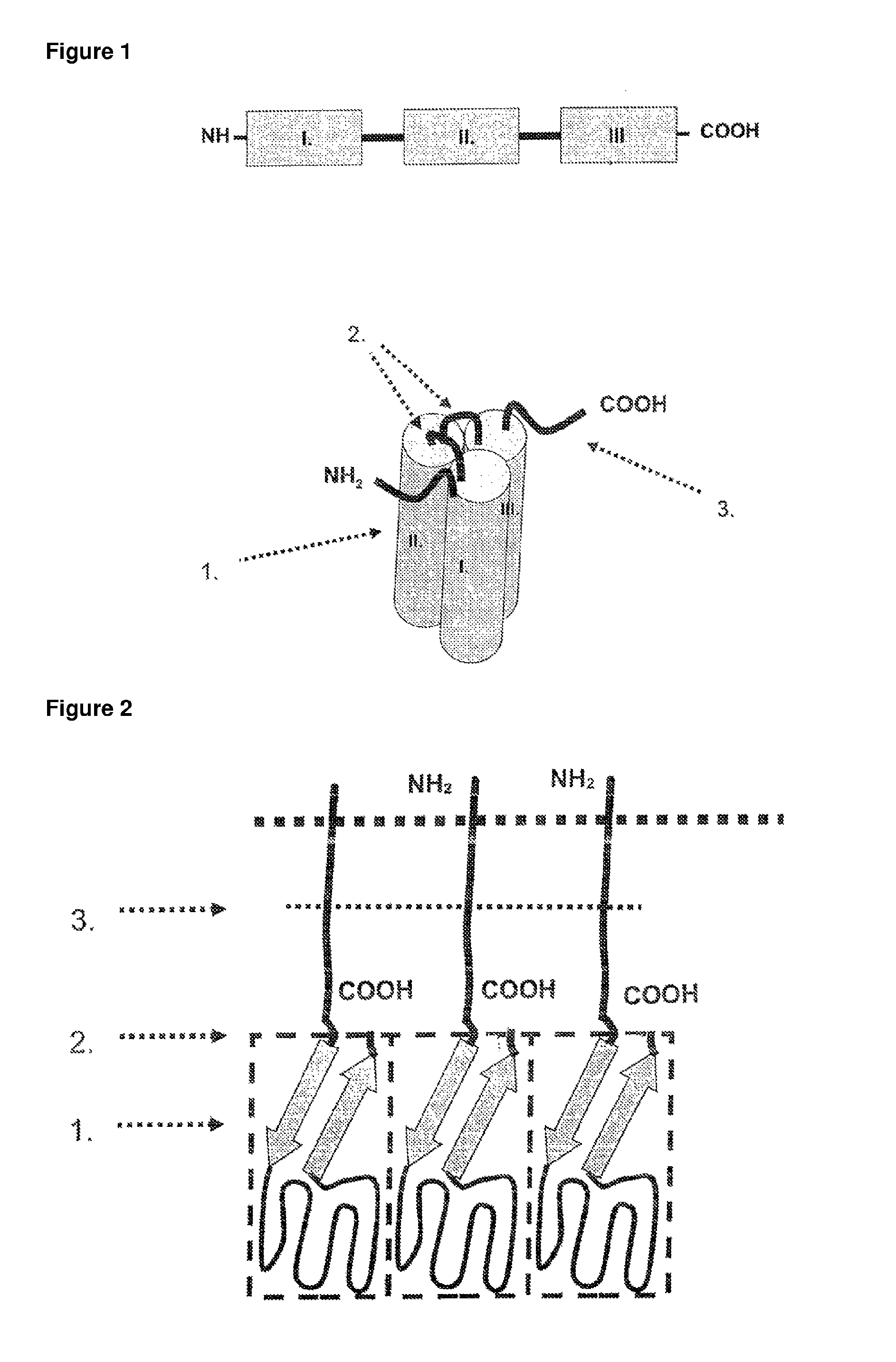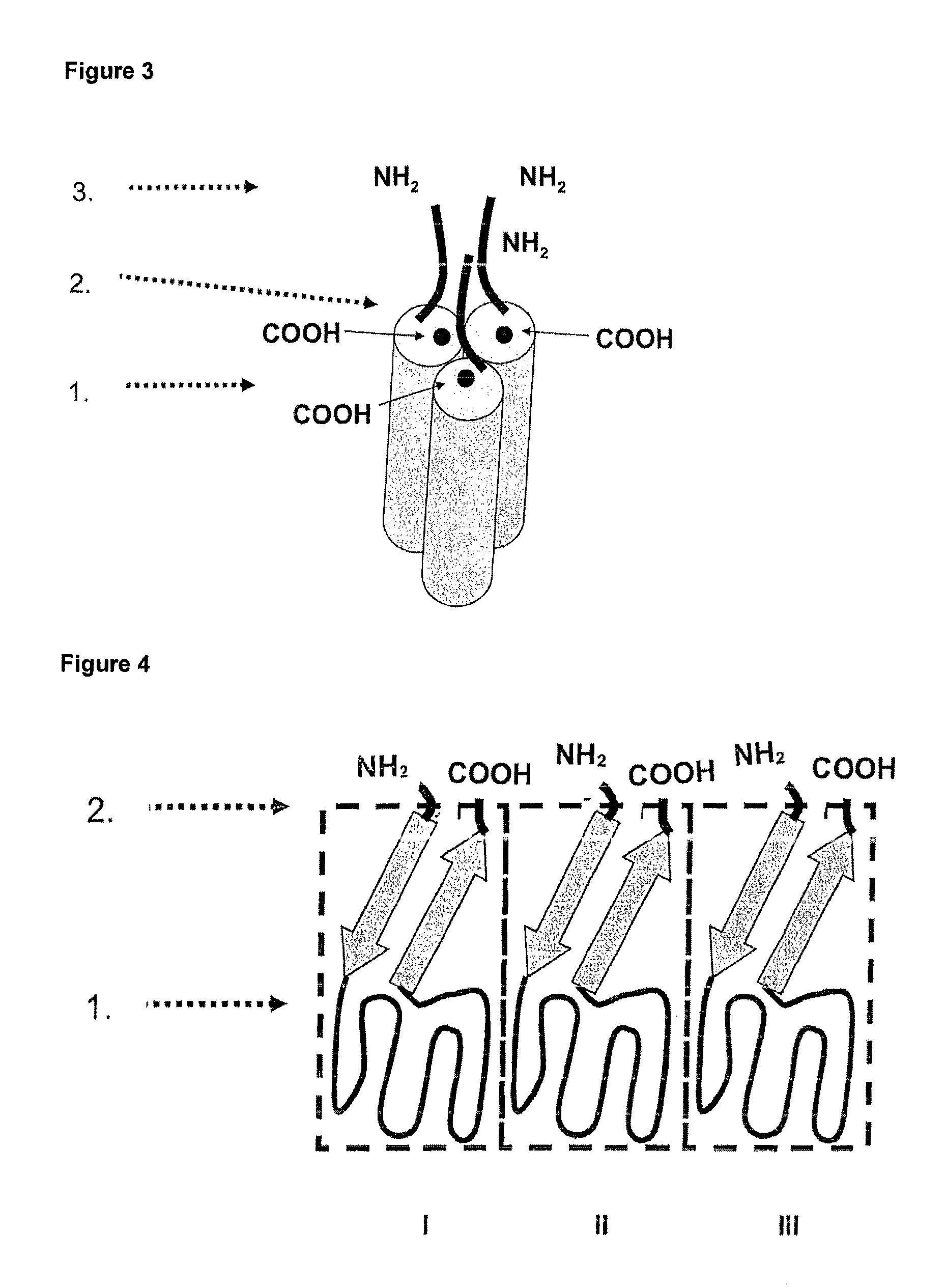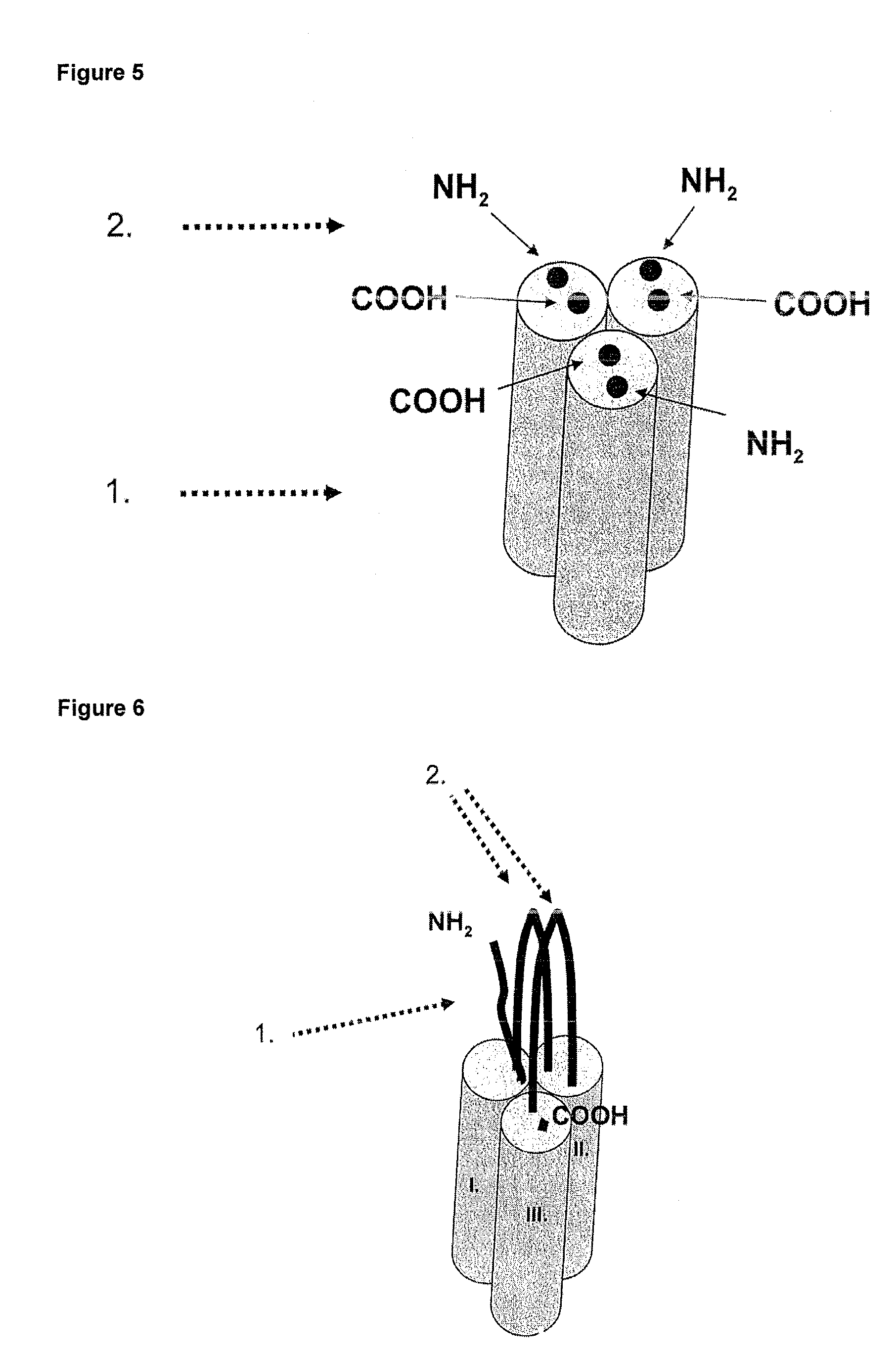Single-chain TNFSF fusion polypeptides
a single-chain, fusion polypeptide technology, applied in the direction of fusion polypeptides, peptide/protein ingredients, dna/rna fragmentation, etc., can solve the problems of difficult preparation of trimeric complexes of tnf superfamily cytokines from recombinant monomeric units, large molecular weight of trimerisation domains, and inefficient trimerisation
- Summary
- Abstract
- Description
- Claims
- Application Information
AI Technical Summary
Problems solved by technology
Method used
Image
Examples
examples
1. Manufacture of a Single-Chain CD95L Fusion Protein (scCD95L)
[0112]In the following, the general structure of the recombinant proteins of the invention (FIG. 1) is shown exemplified for the receptor binding domain of the human CD95 ligand.
1.1 Polypeptide Structure
[0113]A) Amino acids Met1-Ser21[0114]IgKappa-signal peptide, assumed signal peptidase cleavage site after amino acid Gly20[0115]B) Amino acids Glu22-Leu161[0116]First soluble cytokine domain of the human CD95 ligand (CD95L; amino acids 142-281 of SEQ ID NO: 6 including a K145S mutation).[0117]C) Amino acids Gly162-G1y169[0118]First peptide linker element.[0119]D) Amino acids Arg170-Leu307[0120]Second soluble cytokine domain of the human CD95 ligand (CD95L; amino acids 144-182 of SEQ ID NO: 6 including a K145S mutation).[0121]E) Amino acids Gly308-315[0122]Second peptide linker element.[0123]F) Amino acids Arg316-Leu453[0124]Third soluble cytokine domain of the human CD95 ligand (CD95L; amino acids 144-281 of SEQ ID NO: 6 ...
PUM
| Property | Measurement | Unit |
|---|---|---|
| pH | aaaaa | aaaaa |
| MW | aaaaa | aaaaa |
| MW | aaaaa | aaaaa |
Abstract
Description
Claims
Application Information
 Login to View More
Login to View More - R&D
- Intellectual Property
- Life Sciences
- Materials
- Tech Scout
- Unparalleled Data Quality
- Higher Quality Content
- 60% Fewer Hallucinations
Browse by: Latest US Patents, China's latest patents, Technical Efficacy Thesaurus, Application Domain, Technology Topic, Popular Technical Reports.
© 2025 PatSnap. All rights reserved.Legal|Privacy policy|Modern Slavery Act Transparency Statement|Sitemap|About US| Contact US: help@patsnap.com



